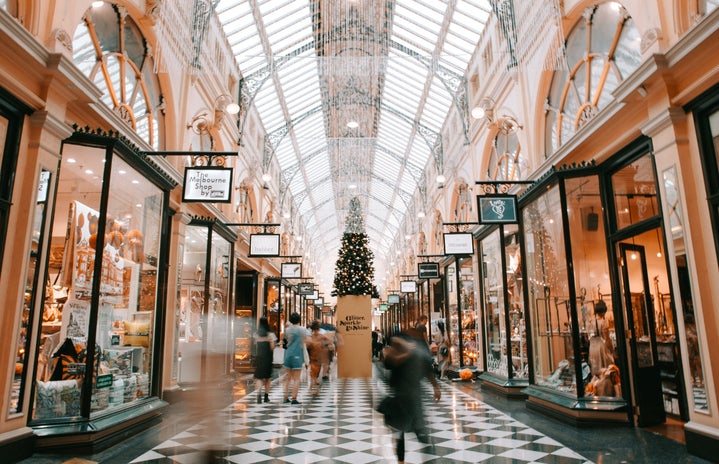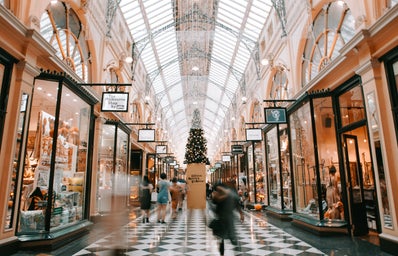When I was a little girl, I always got the sense that shopping malls were the place to be. I don’t know if it’s because I liked them that much, or if it was also partly because Hollywood always made it seem like the cool place to hang out.
I mean, how many teenage movies from the 2000s feature a scene at a mall? Definitely a few, and enough to influence my opinions. Fast forward to 2022, and there’s an ever-growing discussion of why malls are dying. The topic has been around for at least five years, but due to the pandemic, the idea has been exacerbated.
In a 2020 article, CNBC reported that 25% of malls in America are expected to shut down in the next five years. We no longer live in the consumerist utopia of the 1980s, where brightly colored malls shone with stores waiting for people to buy and hang out. But besides the pandemic, what is killing malls?
A lot of people point their fingers at online shopping. Why leave your house when you can find many more options at the click of your fingers? Even if it means waiting a week for a package, you don’t have the hassle of going and spending time looking for something you might not even find.
Others point to a shift in consumer habits. Business Insider reports that during the 2000s, people “shifted away from the department store altogether,” which in itself isn’t a problem, but once you look at any shopping mall in this country, you’ll understand the connection: the American mall always includes one or two massive department stores. If they’re the star, and people don’t care for them, that already affects a mall.
I mean, when was the last time you shopped at a JCPenney or at a Macy’s? Probably not too recently, and if you did, it’s probably not a habit.
If changing shopping habits is driving the death of malls, does that mean they’re also the solution?
From my point of view, they’re part of the solution. If we know department stores aren’t doing it for people, should we get rid of them? No, but we should probably not make them a mall’s focus. Developers could limit it to one, and instead have other types of stores and businesses around their malls, which takes me to my next point.
Americans aren’t seeing the opportunity behind a mall. Too many people see them as a mere place to shop, or at least that’s what I gather from my research, and that makes sense: they are called shopping malls for a reason, but they’re also a great hangout spot. If you want to meet with friends, going to the mall sounds like a plan, even if you don’t actually buy anything.
So what else can malls have? I’ll give you an example.
I lived in Venezuela until I was 11, and our malls were a bit different. A lot of the time, they have movie theaters, restaurants beyond the food court, theme or skate parks, private ballrooms you can rent, and a diversity of services. One of them even had a grocery store. For us, it’s not just about a shopping experience, but it’s more of a place to have something to do. This is what U.S. malls need. A variety of things to do. Not just department and retail stores.
I also feel like U.S. malls would benefit from having a bit of a change in their architecture. I can’t speak for the entire country, but at least in Florida, malls expand rather than rise. They’re also largely closed-off spaces. Why not try a multiple-story building with more open spaces? People might be interested in seeing some different architecture, and give it a try.
Take the Millenium Mall in Caracas, Venezuela, as an example of unique architecture. It’s a multiple-story mall, and it offers interesting access to it. There’s also a skate park in the area that’s at street level.
It seems malls are dying in the U.S. because they haven’t really changed in at least 40 years. What they really need is some revamping.
Again, I’m not an expert, but as an observer and a consumer, I can tell you that we’d really benefit from malls that were more focused on giving you an experience beyond shopping!



